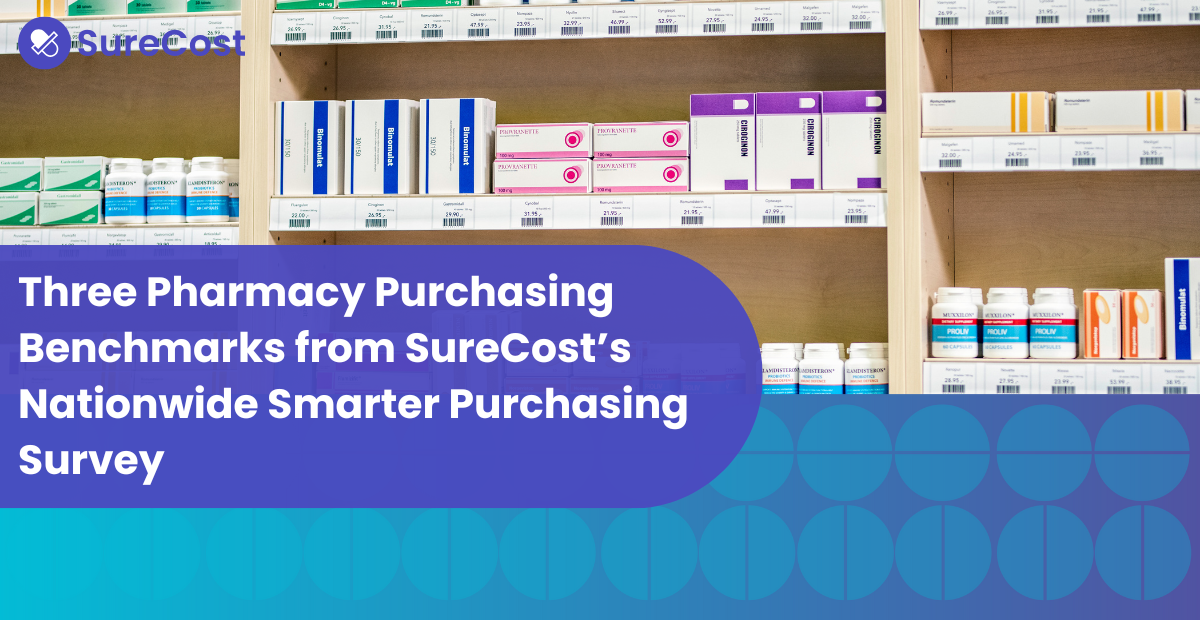For some pharmacies, you can never have too many eggs in one basket. Using a single vendor for all purchases may seem easy: review one catalog with one set of prices and then send one purchase order for all the products they need. That’s a simple summary of a far more challenging approach.
The True Cost of Purchasing Through a Single Vendor
“Convenience” is the most common reason pharmacy professionals give for only purchasing through a single vendor. Given the complexity of procurement, that’s understandable.
The pharmacy purchasing ecosystem is a web of product listings, prices, categories, codes, quantities and other information. It’s hard enough to shuffle through all that data in one catalog. With so many vendors on the market, each using a different catalog and purchasing interface, pharmacy teams stand to lose hours shopping around. No one has the luxury of time (especially with rising staff shortages).
Yet, at the same time, pharmacies are paying for this supposed convenience. Relying on a single vendor also means that the vendor controls your pricing. You’re subject to its business decisions, which may not align with your goals and strategy. That vendor’s pricing may be profitable for the vendor but not necessarily align with the market.
Relying on a single vendor also means pharmacies must trust another company’s business intelligence. The vendor may furnish reports on savings and performance. But they’re making all the calculations and determining which metrics you see. Many vendors share these reports at the end of the quarter. That doesn’t allow pharmacies to adjust their purchasing strategy effectively, and it delays spotting issues and errors.
Like any business, vendors aim for profitability and the best service for their customers. But everyone makes mistakes. They may accidentally invoice higher than the contracted or negotiated price, fill incorrect items without adjusting their billing or make other errors that cost pharmacies as much as a 23-basis-point discrepancy between the actual quantity of goods received and the invoiced price. Unfortunately, the burden is on the pharmacy to catch these errors, report them promptly and provide the right documentation to correct the issue.
If you rely on a single vendor for all products when a drug shortage hits, you still spend hours scrambling to find an alternative. You’re also left explaining the issue to patients waiting for the medications they need from the pharmacy they rely on. That damages their trust in your pharmacy and may make them seek other providers. With drug shortages rising, it’s hard to treat this as an occasional scenario.
Solutions for Single Vendor Purchasing
If pharmacies want to stick to using a single vendor, they need tools to ensure transparency and accountability in that relationship. The right technology enables pharmacies to optimize single-vendor purchasing.
Alongside their own compliance with the vendor’s purchasing terms, pharmacies must also guarantee the vendor is complying with contracts, negotiated prices and every purchase order your pharmacy submits. That means leveraging data to verify that vendors always ship the correct items at the precise quantities indicated for the agreed-upon prices. It also means tracking that rebates are calculated and applied accurately and on time.
The best technology doesn’t just keep tabs on a vendor. It should also empower your pharmacy to review data using flexible reporting. Pharmacies gain analytics to identify opportunities for improvement and adjust purchasing strategies to hit higher rebate tiers.
The whole pharmacy team has to be on the same page when purchasing from that single vendor. Otherwise, they may make purchases that don’t meet compliance tiers or miss out on negotiated prices. With the right solution, pharmacies have purchasing “guardrails” to establish preferred products and drive staff to specified items. Pharmacies also gain insights into purchasing decisions and can audit to assess how well their pharmacy adheres to purchasing rules and strategy.
Expand and Unify Your Catalog
The right solution can optimize how you work with a single vendor, but it can only overcome some of the challenges. Expanding your purchasing portfolio means:
- Wider variety of products
- More purchasing options
- Competitive pricing
- Back-ups during drug shortages
In addition to the wealth of secondary vendors on the market, many pharmacies join GPOs and buying groups that use their combined purchasing power to negotiate better deals and other benefits. Incorporating more vendors does involve wading into an even deeper pool of data.
That’s why it’s crucial to harness a unified purchasing management solution that integrates all vendor catalogs into a single interface. You won’t be stuck flipping through multiple windows and manually comparing prices. You can view all purchasing options through a single solution that automatically compares all available products with updated pricing. The right technology also accounts for negotiated pricing and rebate modeling to show you the true best purchasing option (not just the item with the lowest price).
Pharmacies may assume that a single vendor is the easiest approach. However, with the right solution, they can easily unlock savings opportunities from across the market. There’s no shortage of challenges to a pharmacy’s bottom line. It's crucial to take advantage of every opportunity to save more, work smarter and stay compliant.
.png?w=500)



.png)


